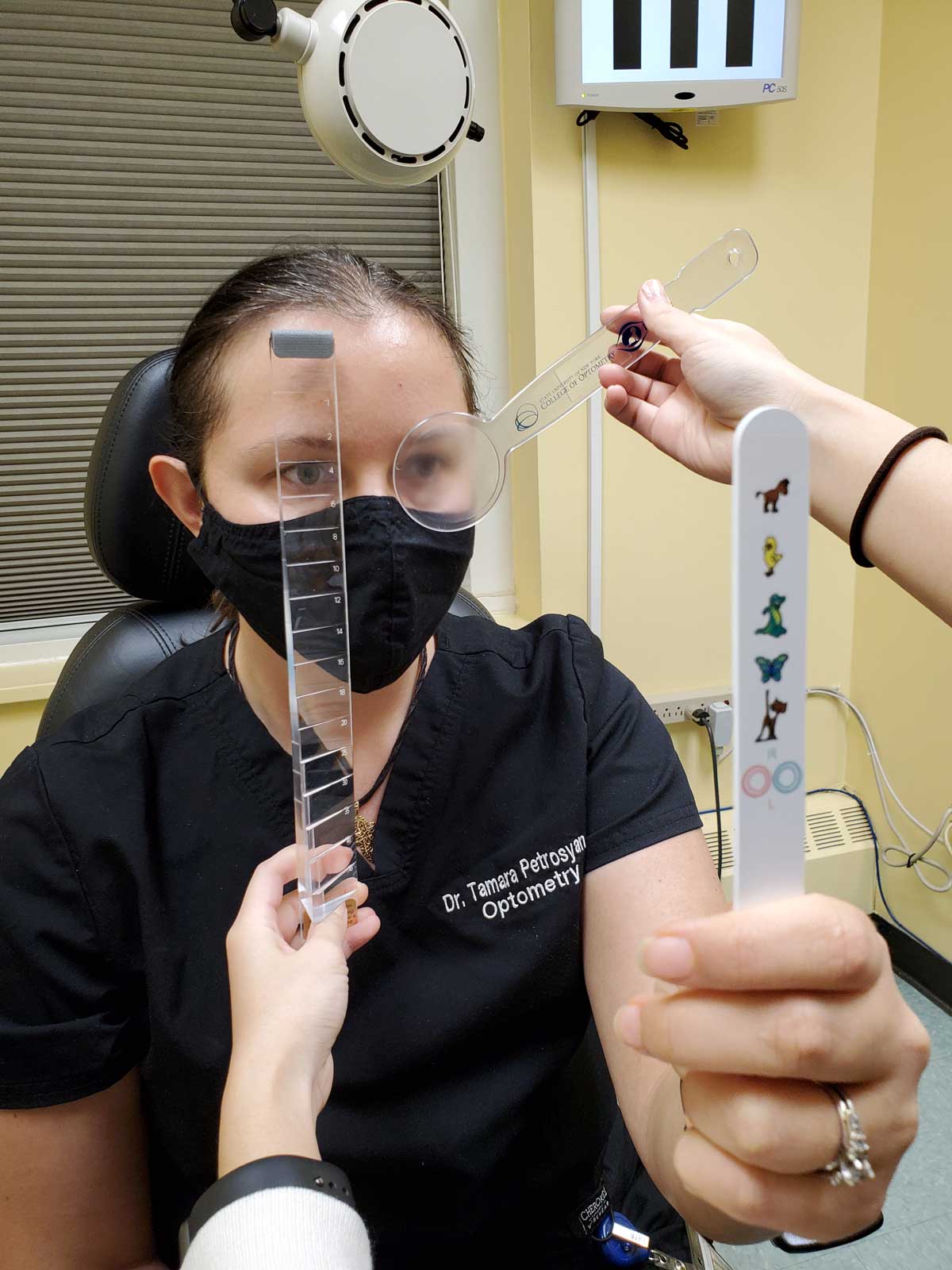 |
This study found that accommodative and binocular disorders are more common in patients with diabetes. Photo: Tamara Petrosyan, OD. Click image to enlarge. |
It’s been shown that ocular accommodation and binocular vision performance could be impaired by diabetes, and cases of diabetes among young adults are rising across the globe. To see if there is a correlation of accommodative and binocular indices with the severity of diabetes, researchers compared these factors between diabetic subjects and controls.
A total of 30 patients with DM and 30 controls, all between the ages of 18 and 40, were used in this study. Diabetes was diagnosed by a hemoglobin A1c higher than 6.5%. All participants underwent a complete exam including visual acuity measurement, objective and subjective refraction and accommodative and binocular vision assessment.
The study showed that aspects of accommodative and binocular vision performance are strongly affected by diabetes and that there is a large correlation between accommodative and binocular disorders and the severity of the disease. A significant percentage of young individuals with DM have severe vision-related symptoms—26.6% compared with the control group at 6.6%.
The near point of convergence was more remote in the diabetic group. Mean accommodation amplitude and vergence facility and the median monocular accommodative facility were significantly lower in the diabetic group. Previous studies consistently reported differences between values of accommodation amplitude, ranging from 0.8D to 5D.
This study also showed a higher lag of accommodation and a significant correlation with the HbA1c level, while vergence facility, accommodation amplitude and accommodative facility exhibited a negative correlation with HbA1c.
There were no statistically significant differences in best-corrected visual acuity, sphere, cylinder and spherical equivalent refraction between the diabetic and control groups.
“It seems that the impaired accommodative function in diabetics is mainly due to changes in the crystalline lens,” the authors noted.
“One of the interesting findings was deficient vergence facility in diabetic subjects despite normal fusional vergence amplitudes. It should be noted that vergence amplitude and facility may reflect different functional aspects of the vergence system,” they added.
A study found it’s possible for symptomatic patients to have normal fusional vergence amplitudes and yet still have a problem in the area of facility or vergence dynamics; however, the finding of similar fusional vergence ranges in the diabetes and control groups may also result from the use of a prism bar with disparity changes being “non-smooth and fast, and therefore less sensitive.”
The authors suggested exams of young diabetic patients should not just focus on pathological anterior or posterior segment changes but also on accommodative and binocular functions.
Nabovati P, Khabazkho M, Fayaz F, et al. Vision-related symptoms, accommodative and binocular vision performance in young diabetics vs. normal controls. Ophthalmic Physiol Opt. February 2, 2022. [Epub ahead of print]. |

